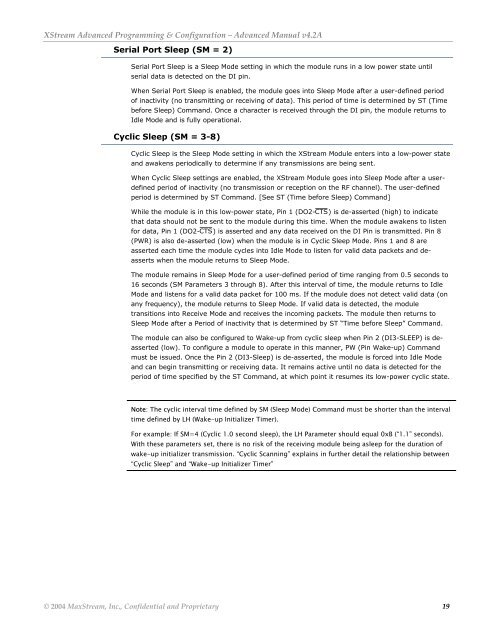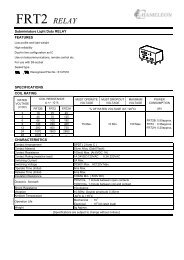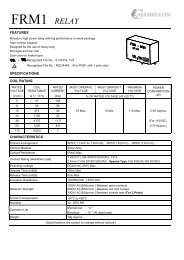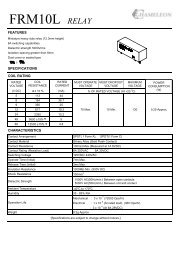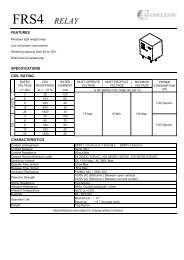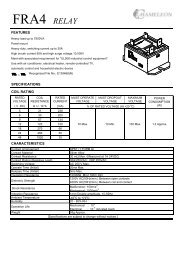XStream⢠Advanced Programming & Configuration
XStream⢠Advanced Programming & Configuration
XStream⢠Advanced Programming & Configuration
You also want an ePaper? Increase the reach of your titles
YUMPU automatically turns print PDFs into web optimized ePapers that Google loves.
XStream <strong>Advanced</strong> <strong>Programming</strong> & <strong>Configuration</strong> – <strong>Advanced</strong> Manual v4.2A<br />
Serial Port Sleep (SM = 2)<br />
Serial Port Sleep is a Sleep Mode setting in which the module runs in a low power state until<br />
serial data is detected on the DI pin.<br />
When Serial Port Sleep is enabled, the module goes into Sleep Mode after a user-defined period<br />
of inactivity (no transmitting or receiving of data). This period of time is determined by ST (Time<br />
before Sleep) Command. Once a character is received through the DI pin, the module returns to<br />
Idle Mode and is fully operational.<br />
Cyclic Sleep (SM = 3-8)<br />
Cyclic Sleep is the Sleep Mode setting in which the XStream Module enters into a low-power state<br />
and awakens periodically to determine if any transmissions are being sent.<br />
When Cyclic Sleep settings are enabled, the XStream Module goes into Sleep Mode after a userdefined<br />
period of inactivity (no transmission or reception on the RF channel). The user-defined<br />
period is determined by ST Command. [See ST (Time before Sleep) Command]<br />
While the module is in this low-power state, Pin 1 (DO2- ) is de-asserted (high) to indicate<br />
that data should not be sent to the module during this time. When the module awakens to listen<br />
for data, Pin 1 (DO2- ) is asserted and any data received on the DI Pin is transmitted. Pin 8<br />
(PWR) is also de-asserted (low) when the module is in Cyclic Sleep Mode. Pins 1 and 8 are<br />
asserted each time the module cycles into Idle Mode to listen for valid data packets and deasserts<br />
when the module returns to Sleep Mode.<br />
The module remains in Sleep Mode for a user-defined period of time ranging from 0.5 seconds to<br />
16 seconds (SM Parameters 3 through 8). After this interval of time, the module returns to Idle<br />
Mode and listens for a valid data packet for 100 ms. If the module does not detect valid data (on<br />
any frequency), the module returns to Sleep Mode. If valid data is detected, the module<br />
transitions into Receive Mode and receives the incoming packets. The module then returns to<br />
Sleep Mode after a Period of inactivity that is determined by ST “Time before Sleep” Command.<br />
The module can also be configured to Wake-up from cyclic sleep when Pin 2 (DI3-SLEEP) is deasserted<br />
(low). To configure a module to operate in this manner, PW (Pin Wake-up) Command<br />
must be issued. Once the Pin 2 (DI3-Sleep) is de-asserted, the module is forced into Idle Mode<br />
and can begin transmitting or receiving data. It remains active until no data is detected for the<br />
period of time specified by the ST Command, at which point it resumes its low-power cyclic state.<br />
Note: The cyclic interval time defined by SM (Sleep Mode) Command must be shorter than the interval<br />
time defined by LH (Wake-up Initializer Timer).<br />
For example: If SM=4 (Cyclic 1.0 second sleep), the LH Parameter should equal 0xB (“1.1” seconds).<br />
With these parameters set, there is no risk of the receiving module being asleep for the duration of<br />
wake-up initializer transmission. “Cyclic Scanning” explains in further detail the relationship between<br />
“Cyclic Sleep” and “Wake-up Initializer Timer”<br />
© 2004 MaxStream, Inc., Confidential and Proprietary 19


